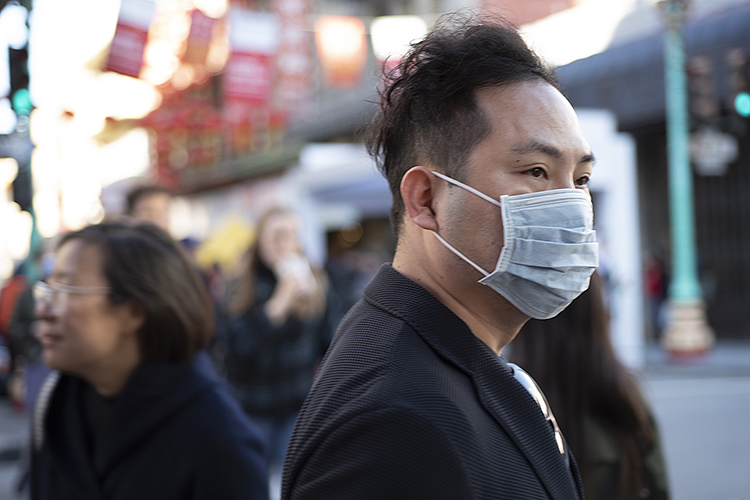Pandemic poses greater risks, stresses for California racial minorities, poll finds

People of color in California face elevated health and economic risks in the COVID-19 pandemic, with less freedom to work from home and more anxiety over paying for necessities and medical care, reports a new poll from the UC Berkeley Institute of Governmental Studies (IGS).
White Californians and their families were significantly more likely than Latinx and black residents to have the safety that comes from working at home during the pandemic, the poll found. In all, 61.3% of whites said they could work from home, nearly 20 points more than reported by Latinx respondents. Among black Californians, 53.3% report being able to work at home, joined by 58.9% of Asian-Americans.
That risk is compounded by the degree of exposure to other people, the new IGS poll found. Among white Californians, 26.5% report that they face a somewhat serious or very serious problem because they work in close proximity with other people. More than twice as many Latinx voters — 56.7% — expressed similar worries, followed by 43.8% of blacks and 44.4% of Asian Americans.
“The stark racial differences in which populations can safely work from home are striking,” said IGS co-Director Cristina Mora. “Latinos and blacks, and their families, simply face more contact and more risk than whites.”
The Berkeley IGS Poll of 8,800 registered California voters was conducted online between April 16 and April 20, in conjunction with the UC-based California Institute of Health Equity and Action. It is one of the first U.S. efforts to gauge opinion on the COVID-19 pandemic and its impact.
The first report from the poll, released May 1, found that California voters are deeply divided about the COVID-19 pandemic, with supporters of President Donald Trump more worried about the economy and less concerned that they will infect others. A third report from the poll is slated for release on Friday May 8.
The new IGS report suggests that health insecurity is almost inseparable from economic security — and again, the poll found dramatic race-based disparities:
- In all, 83.2% of respondents said COVID-19 presents some degree of threat to their finances, with 44.1% calling it a “major” risk. Among Latinos, however, 59.6% cited it as a major risk, followed by 53.8% among blacks. Among Asian Americans, 44.6% saw it as a major risk, but among whites, that number fell to 37.3%.
- Just over 40% in all said they had a somewhat or very serious problem paying for necessities because of the COVID-19 pandemic. Nearly 42% of Latinx respondents saw their problems as very serious, outpacing the threat reported by blacks (31.9%) and Asian-Americans (27%). Among whites, just 13.6% described the financial threat as very serious.
Despite the economic risks, the poll found that Californians overall strongly support stay-at-home measures intended to limit the spread of infection. A little over 87% somewhat or strongly support a national stay-at-home order, with black respondents reporting the highest support at 92.6%.
In all, 70% are more worried about ending shelter-in-place practices too soon, compared to 30% who are more worried about the economic impact of continuing too long. But the results again showed a significant racial divide. Among blacks, 80.9% were more worried about protecting health, followed by 76% among Asian-Americans and 72.4% among Latinos. Among white Californians, that number fell to 67.6%.
“Those groups facing the greatest economic hardship from the pandemic are not necessarily the most eager to end the lockdown,” said IGS co-Director Eric Schickler. “That may be because these same groups also are most likely to have jobs that put them at greatest risk of exposure to COVID-19.”
